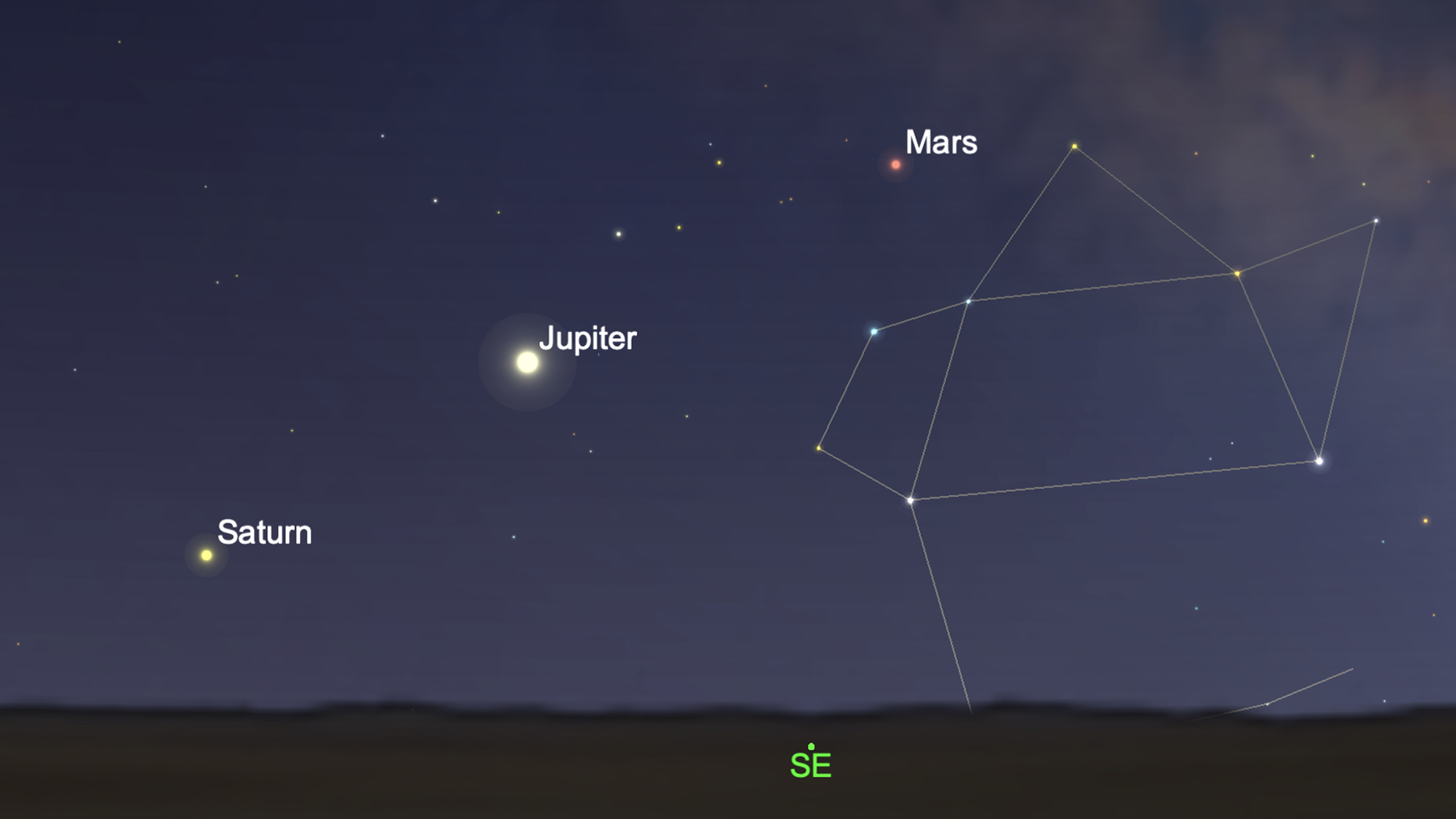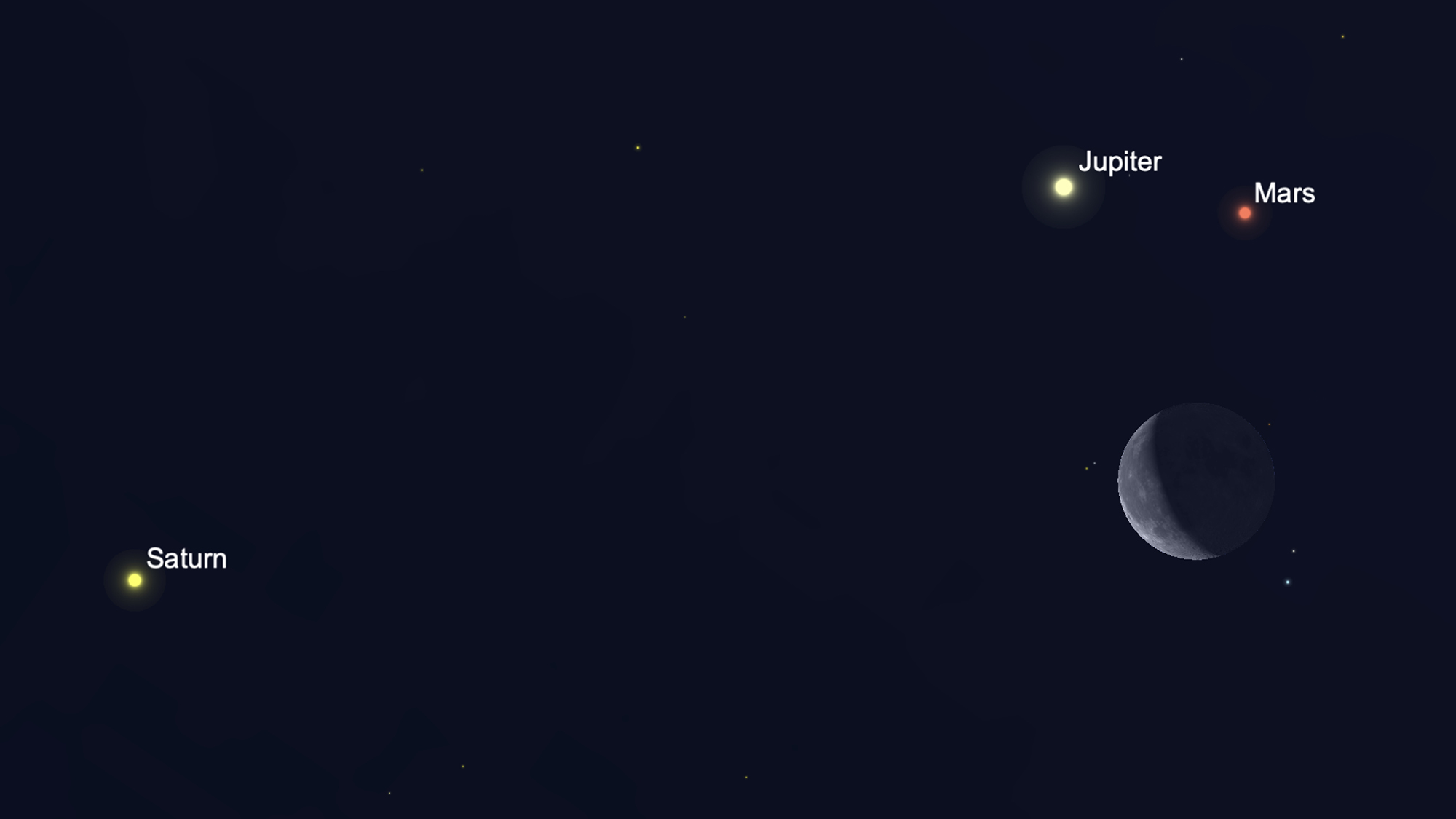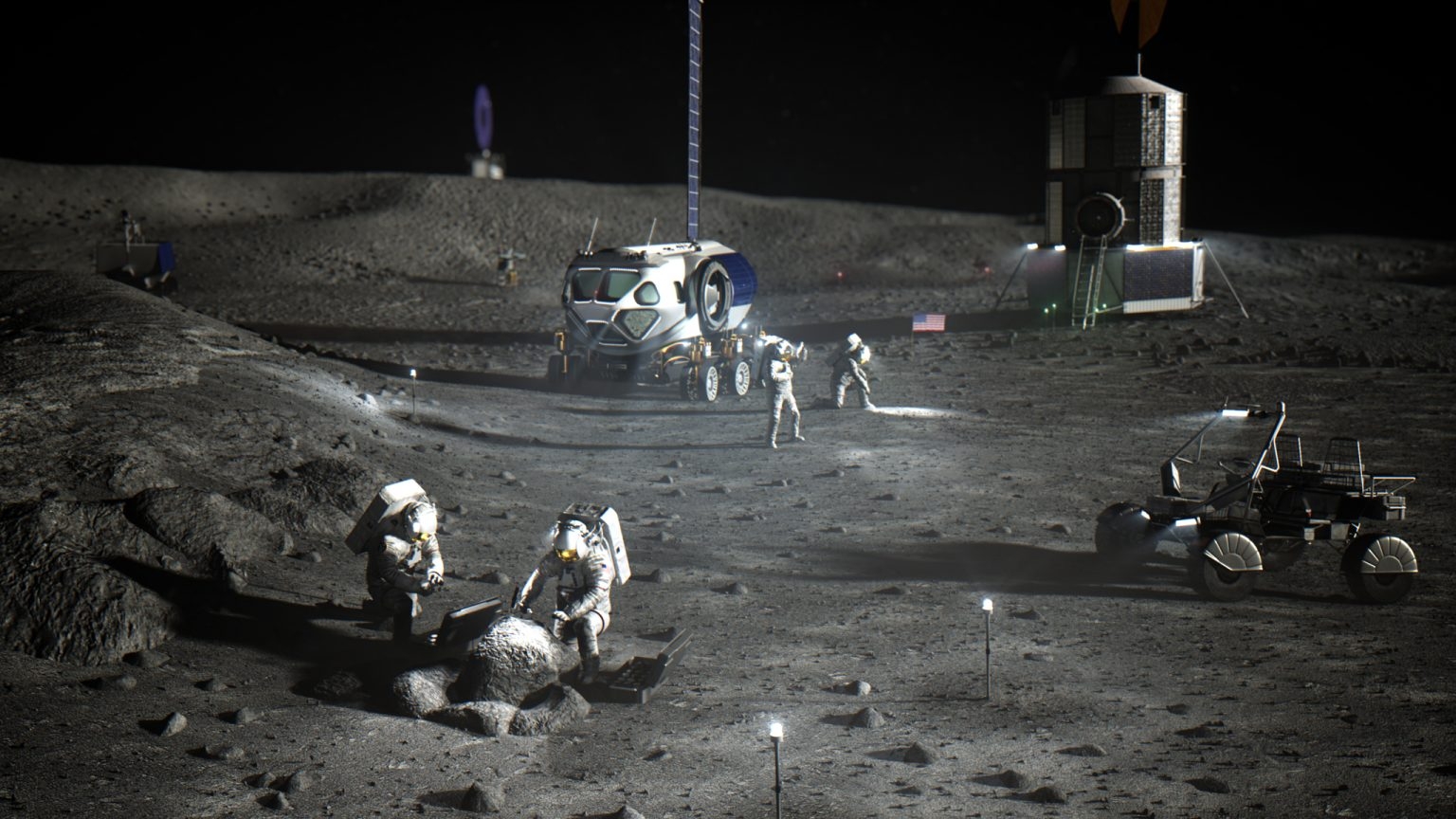See Mars with Jupiter and Saturn in the dawn sky in March
This is a good week to check out progress of the planet Mars as it continues toward an unusually close approach to the Earth in early fall.
This week Mars rises between 3:20 and 3:30 a.m. local time, and is well up in the south-southeast by dawn. It currently shines at magnitude 1.1, about equal in brightness with the star Spica, in the constellation Virgo, and just a trifle fainter than its so-called "rival," the ruddy star Antares in the constellation of Scorpius, the scorpion. Mars actually passed 4.7 degrees north of Antares on Jan. 18, but the Red Planet has since left it far behind to the west.
On Feb. 11, Mars crossed over into the zodiacal constellation of Sagittarius, the archer. This week we'll be able to watch Mars slip just above the pattern of eight fairly bright stars of Sagittarius popularly known today as the "teapot."
Related: When, where and how to see the planets in the 2020 night sky
With perhaps the possible exception of the Big Dipper, the teapot is the most perfect looking star picture in the sky. Distinctive groupings of stars forming part of the recognized constellation outlines, or lying within their boundaries, are known as asterisms. Ranging in size from sprawling naked eye figures to minute stellar settings, they are found in every quarter of the sky and at all seasons of the year. The larger asterisms — ones like the Big Dipper in Ursa Major and the Great Square of Pegasus — are often better known than their host constellations. The teapot of Sagittarius is yet another such example.
Interplay with Jupiter and Saturn
Of particular interest will be the interaction of Mars with the planets Jupiter and Saturn during this upcoming week. Jupiter, which also rises a few hours before the sun, is best seen (especially in telescopes) as dawn is starting to break. At that hour, the king-sized world shines fairly low in the southeast with the teapot of Sagittarius to its right.
Quietly shifting out of Sagittarius and into Capricornus on March 21 is Saturn, which deserves close examination as soon as it emerges from the glow of sunrise this month. Saturn rises about a half hour before the first light of dawn by early March, and nearly an hour and a half earlier at month's end. But its southern declination will keep it frustratingly low for northern observers. The best views will be after dawn begins, and the farther south you are the better.
Breaking space news, the latest updates on rocket launches, skywatching events and more!
On the morning of March 4, about 90 minutes before sunrise, Mars, Jupiter and Saturn will be strung out diagonally in that order from upper right to lower left, low in the southeast sky, with Jupiter equally spaced by 8 degrees from Mars and Saturn. During the rest of the month, the arrangement of these three worlds will noticeably change. The main reason being that Mars moves rapidly eastward, while the motions of Jupiter and especially Saturn are more sluggish. Thus their positions relative to each other will change in an interesting manner.
Related: See the moon, 3 planets and red star Antares arc over NYC (photos)
Related: Moon phases
In the morning sky of March 18, the late crescent moon will move into the planetary group. About two hours before sunrise, it will be below Mars, with the planet standing off its upper cusp, and Jupiter above and to the left. Slowly, the moon will move past Mars and toward Jupiter, but the rising sun will brighten the sky and cause Jupiter to disappear before the moon can pass it.
On March 20, Mars and Jupiter are in conjunction, meaning that the two planets share the same celestial longitude. Mars passes 0.7 degrees to the lower right of the much brighter Jupiter. And then on March 31, Mars closely interacts with Saturn. The two will be quite striking because of their color contrast (Mars orange-yellow, Saturn yellow-white) and because they will appear virtually the same in brightness.
Slowly getting closer
For the moment, Mars remains rather inconspicuous, but its luster will continue to increase as we gain on it in our smaller, faster orbit. On March 29 at 2 p.m. EDT (1800 GMT), Mars will reach that point in its orbit that will place it at the same distance from both the Earth and the sun: 137.4 million miles (221.1 million kilometers). Through a telescope Mars will still present a rather tiny and unimpressive disk, but it will increase dramatically in brightness and apparent size during the spring and summer months.
After May 15, Mars' increase in brightness will start becoming more noticeable. By June 1 it will reach zero magnitude (comparable to Vega, the fifth-brightest star in the sky) while cruising through the constellation of Aquarius, the water carrier, shining low in the southeast sky during the predawn hours.
On Aug. 21, now in the constellation of Pisces, the fishes, the Red Planet will rival Sirius, the brightest of all stars, rising above the eastern horizon around 10:15 p.m. local daylight time. So bright does it become that between Sept. 29 and Oct. 28, it will supplant mighty Jupiter as the second-brightest planet and become the third-brightest object in the nighttime sky (next to the moon and Venus).
Then on Oct. 6 at 10:18 a.m. EDT (1418 GMT), the planet will be at its closest to Earth in 2020; at that moment it will be 38.57 million miles (62.06 million km) away. It arrives at opposition to the sun on Oct. 13, still in Pisces, visible from dusk to dawn and shining at a head-turning magnitude of -2.6.
So, if you are up early this week looking for Mars and see it, just try to visualize what it will be like gazing at it seven months hence, when it will be almost 120 million miles (193 million km) closer, appear four times larger and 30 times more brilliant than it is now!
- Watch Mars 'sneak' behind the crescent moon in these amazing views (video)
- Amazing photos: the 'blood moon' eclipse and Mars opposition of 2018
- This picture is from Mars. It's probably not what you think.
Joe Rao serves as an instructor and guest lecturer at New York's Hayden Planetarium. He writes about astronomy for Natural History magazine, the Farmers' Almanac and other publications. Follow us on Twitter @Spacedotcom and on Facebook.
OFFER: Save at least 56% with our latest magazine deal!
All About Space magazine takes you on an awe-inspiring journey through our solar system and beyond, from the amazing technology and spacecraft that enables humanity to venture into orbit, to the complexities of space science.

Joe Rao is Space.com's skywatching columnist, as well as a veteran meteorologist and eclipse chaser who also serves as an instructor and guest lecturer at New York's Hayden Planetarium. He writes about astronomy for Natural History magazine, Sky & Telescope and other publications. Joe is an 8-time Emmy-nominated meteorologist who served the Putnam Valley region of New York for over 21 years. You can find him on Twitter and YouTube tracking lunar and solar eclipses, meteor showers and more. To find out Joe's latest project, visit him on Twitter.



